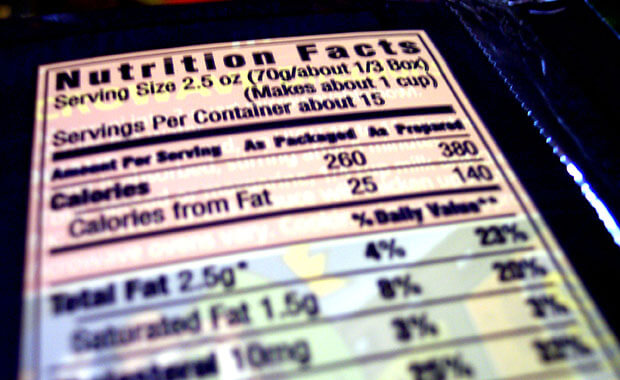 Often times the first and only thing you look at on the label is the fat and sugar content. Knowing how to read the whole label will help you reach your health goals and not leave you confused why one particular item isn’t working for you.
Often times the first and only thing you look at on the label is the fat and sugar content. Knowing how to read the whole label will help you reach your health goals and not leave you confused why one particular item isn’t working for you.
Here are some tips for making the most of the information on the Nutrition Facts label:
- Start with the serving information at the top of the label
This will tell you the size of a single serving and the total number of servings per container (package). - Next, check total calories per serving.
Pay attention to the calories per serving and how many servings you’re really consuming if you eat the whole package. If you double the servings you eat, you double the calories and nutrients. - Limit these nutrients.
AHA recommends limiting these nutrients: Based on a 2,000 calorie diet, no more than 11-13 grams of saturated fat, as little trans fat as possible, and no more than 1,500 mg of sodium. - Get enough of these nutrients.
Make sure you get enough of beneficial nutrients such as: dietary fiber, protein, calcium, iron, vitamins and other nutrients you need every day. - Quick guide to % Daily Value
The % Daily Value (DV) tells you the percentage of each nutrient in a single serving, in terms of the daily recommended amount. As a guide, if you want to consume less of a nutrient (such as saturated fat or sodium), choose foods with a lower % DV — 5 percent or less. If you want to consume more of a nutrient (such as fiber), seek foods with a higher % DV — 20 percent or more.
The next section of information on a nutrition label is about the amounts of specific nutrients in the product.
Here are more tips for getting as much health information as possible from the Nutrition Facts label:
- Remember that the information shown in these panels is based on 2,000 calories a day. You may need to consume less or more than 2,000 calories depending upon your age, gender, activity level, and whether you’re trying to lose, gain or maintain your weight.
- When the Nutrition Facts label says a food contains “0 g” of trans fat, but includes “partially hydrogenated oil” in the ingredient list, it means the food contains trans fat, but less than 0.5 grams of trans fat per serving. So, if you eat more than one serving, you could quickly reach your daily limit of trans fat.


Share Your Comments & Feedback: